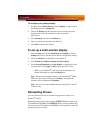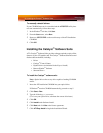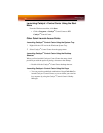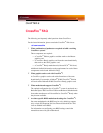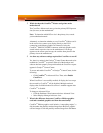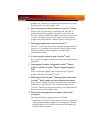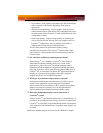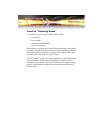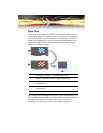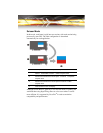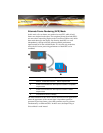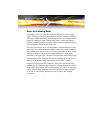
97
graphics card. The result is a complete frame rendered at up to twice
the performance of a single graphics card.
8 How are the graphics cards connected on a CrossFire
™
system?
The two cards are connected by an external cable. The cable is
attached from the Slave graphics card’s DVI-I connection to the
CrossFire
™
Edition’s DMS-59™/VHDCI connection, which is used
to convey information from the Slave graphics card to the Master
graphics card and transmit the combined signal to a display device.
9 Which games/applications work with CrossFire
™
?
CrossFire
™
works with all full-screen 3D games and applications. If
Catalyst
™
A.I. is enabled in the Catalyst
™
Control Center software,
the optimal rendering mode available for the application is
automatically selected.
10 Is a driver profile required to make CrossFire
™
work?
No. CrossFire
™
is enabled by default for all full-screen 3D games and
applications.
11 What happens if you pair a 16-pipeline CrossFire
™
Edition
graphics card with a CrossFire
™
Ready 12-pipeline graphics
card?
In this scenario both graphics cards will operate as 12-pipeline
graphics cards while in CrossFire
™
mode.
12 What happens if the CrossFire
™
Edition graphics card and the
CrossFire
™
Ready graphics card have different clock speeds?
Both cards will continue to operate at their individual clock speeds;
neither card is “stepped down.” The compositing engine on the
CrossFire
™
Edition card merges the resulting images independent of
the clock speed on either graphics card.
13 What are the rendering modes, and what are their specific
advantages?
The following dynamic rendering modes are available:
• SuperTiling - CrossFire
™
renders alternate 32x32 pixel squares in
a fine-grained checkerboard pattern. This configuration increases
the performance, as each card processes half of the complex 3D
objects in the pixel squares.



